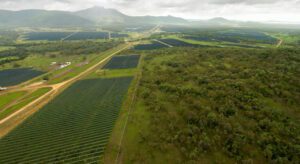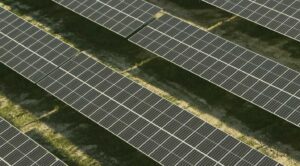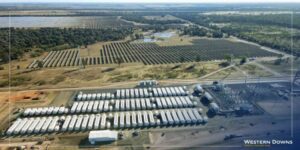
Federal government incentives for rooftop solar are under threat again, this time from a sustained effort from right-wing politicians and media that is being compared to the “$100 lamb roast” and “Whyalla will be a ghost town” campaigns against the then carbon price.
The latest campaign against rooftop solar includes grossly inflated estimates of the cost of the federal rooftop solar subsidies, and no mention of the considerable benefits .
Typically, it is being led by the Murdoch media, which trumpeted a front page “exclusive” (subscription required) on Monday that suggested that the cost of rooftop solar subsidies would reach $100 for each and every household in 2018 because of the big increase in rooftop solar installations.
It quoted the ubiquitous Craig Kelly, the chair of the Coalition’s back-bench environment and energy committee, as describing the rooftop solar subsidies as a “reverse Robin Hood scheme” where “we are increasing the electricity prices on the poor to reduce electricity prices for the rich”.
But the solar industry says the criticisms and the costings included in The Australian article fundamentally misunderstand how the system works.
Ric Brazzale, director of Green Energy Trading, a company that trades certificates and also provides market data, said the article is “another beat up on the solar industry and is using some very spurious analysis.
“It brings back memories of the $100 lamb roast scare campaign,” he said, in reference to Barnaby Joyce’s infamously absurd and misplaced warnings about the impact of the carbon price.
Brazzale provides this table above, which sets out his estimates of the cost pass-through impact to customers for the certificates issued to new rooftop solar systems.
Instead of $100 a household, “the expected cost of $40 per household in 2018 is higher than it would otherwise be as the 2017 Target was exceeded and the surplus is added to the 2018 Target,” he says.
“The average for the two years is $29 per household – approximately equivalent to the average cost of the scheme according to the AEMC (Australian Energy Market Commission).”
The scale of the federal government support is also winding back – from 15 years of electricity generation in 2016, to 14 years in 2017 and 13 years in 2018. It will phase out completely in 2030.
Still, rooftop solar is more popular than it has ever been – including when some state governments offered overly-generous feed-in tariffs in 2010, 2011 and 2012.
In 2017, rooftop solar installations totalled a record 1.057MW, and already the uptake of the first two months of 2018 (118MW in February alone) suggest that record will be broken again in 2018. Queensland now has more than 2GW of rooftop solar, although NSW was the biggest installer last month.
Right-wing attacks on carbon pricing, renewables, and more recently battery storage and demand management, and even vehicle emission standards, have become common place. The only beneficiary has been the fossil fuel industry.
Former prime minister Tony Abbott famously predicted that the carbon price would turn Whyalla into a ghost town. Now its future depends on the ability of new Whyall Steelworks owner Sanjeev Gupta to deliver on his plans to build up to 1GW of solar and storage to reduce energy bills to manageable levels.
The criticism of the residential solar support scheme has also been led by Liberal Democratic Party Senator David Leyonhjelm, who used the same numbers later reprinted by The Australian when taking up the issue in February.
“Subsidies are to blame,” he told the Senate on February 14, and called on the Coalition to cut the market cap to the prime of the small-scale technology certificates from $40/MWh to $30/MWh. The Coalition replied that the scheme was being phased out, as mentioned above.
This was followed up last week by comments from the Grattan Institute, a conservative think tank on energy issues, which said it was time for renewable energy subsidies to be phased out.
Criticism of the small-scale solar scheme invariably ignore the considerable benefits of having such a large amount of rooftop solar in the grid.
Network owners and operators in all states have highlighted how rooftop solar has reduced and deferred the events of peak demand, thereby reducing the cost of wholesale electricity because there is less need for peaking plant and less opportunity to trade on scarcity.
The NSW government has noted rooftop solar’s key role in the heatwaves of February 2017, and February this year, and the Australian Energy Market Operator has highlighted the important role distributed PV played when soaring heat pushed grid demand to “remarkable” record levels in Queensland last month.
“The renewable energy scheme is one of the most successful greenhouse reduction policies that Australia has in place and has been pivotal in the transition of our energy supply away from fossil fuels,” Brazzale says.
“Residential solar PV has delivered benefits to more than just the households that have installed it.
“Numerous studies have found that it provides a dampening effect on wholesale power prices that benefit all customers (merit order effect). In addition, without the contribution of solar PV, peak electricity demand would be much higher and our electricity system would have been put at risk.”
The “take-up” by rich households has been overplayed, as numerous studies have shown. However, what has been surprising has been the lack of effort from state and federal governments in making rooftop solar available to low-income households, renters and apartment dwellers.
That is now being addressed by some governments, such as in South Australia, where Labor has proposed two different schemes that would remove the up-front cost of both rooftop solar and battery storage to low-income households.
For now at least, it appears the Coalition is resisting calls from outside and within. A spokesman for federal energy minister Josh Frydenberg said:
“According to the Australian Energy Market Commission (AEMC) the average cost to households over the last five years of the SRES (small-scale renewable energy scheme) has been around $29 a year. With the price peaking in 2012 at $44 for the year.”
“The price of small-scale certificates is set by the market, with a maximum of $40 per certificate.”
(Because of the over-supply last year, the market price of the certificates fell to $30/MWh, leaving some installers who had not prepared for such a fall in some difficulty).
Frydenberg’s spokesperson continued: “The AEMC forecasts that residential electricity prices will fall over the next two years as renewable energy, including small-scale solar, supported by the Renewable Energy Target enters the system.”
A similar dead bat was played by Frydenberg’s representative in the Senate, Simon Birmingham, when asked by Leyonhjelm in February.









